Kuala Lumpur, the capital city of Malaysia, is a vibrant metropolis known for its modern skyline dominated by the iconic Petronas Twin Towers. It's a cultural melting pot, offering a variety of experiences for all types of travelers. Here are some must-visit attractions and activities in Kuala Lumpur:
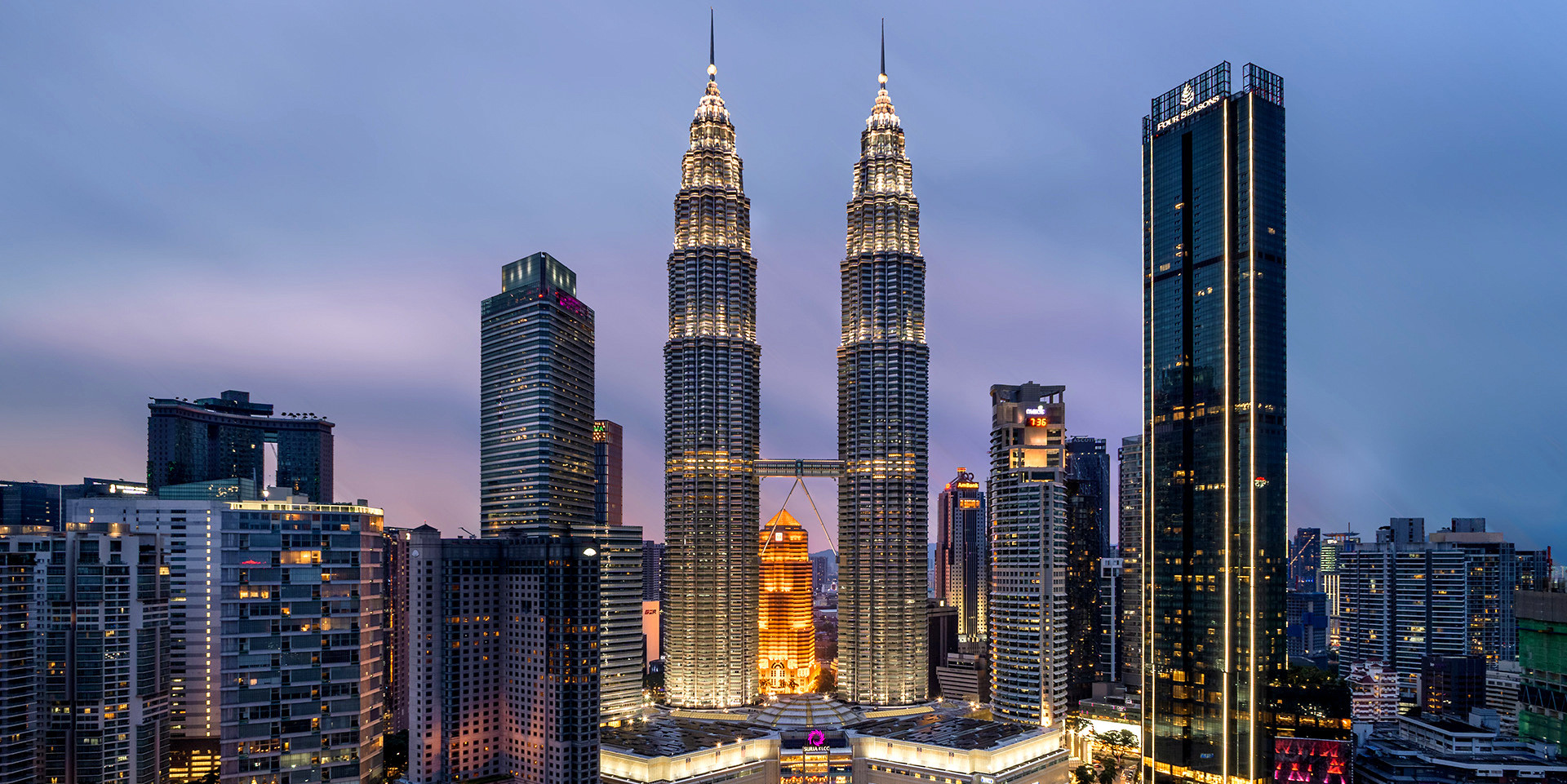
-
Petronas Twin Towers: No visit to Kuala Lumpur is complete without seeing the twin skyscrapers that have become synonymous with the city's identity. Take a trip to the Skybridge and the observation deck for breathtaking views of the city.
-
Batu Caves: Located just outside the city, this limestone hill features three major caves and some smaller ones. The site is famous for its large statue of the Hindu God at the entrance and the colorful steps leading up to the caves.
-
Menara Kuala Lumpur (KL Tower): Another iconic building, the KL Tower offers its spectacular views from its observation deck. It's particularly stunning at night when the city lights up.
-
Jalan Alor: This street is a foodie’s paradise. At night, the street comes alive with vendors serving some of the city's best street food, offering everything from Chinese to Malay and Indian dishes.
-
Central Market: A cultural landmark itself, Central Market is a great place to find handicrafts, art, and apparel representing Malaysia's diverse cultural heritage.
-
Thean Hou Temple: One of the largest Chinese temples in Southeast Asia, it offers a spectacular view of the city and is a great place to learn about Buddhist culture and architecture.
-
Shopping: Kuala Lumpur is a shopper’s paradise with options ranging from high-end boutiques in Bukit Bintang to expansive malls like Suria KLCC, and vibrant local markets.
-
Merdeka Square: Surrounded by historic buildings, it’s a significant site for Malaysia’s history and perfect for a leisurely walk.
-
Kuala Lumpur Bird Park: Located in the serene and scenic Lake Gardens, the park is home to more than 3,000 birds representing more than 200 species, making it a fantastic spot for families and nature enthusiasts.
-
Nightlife: Kuala Lumpur has a vibrant nightlife scene, from rooftop bars like Heli Lounge Bar to bustling nightclubs and elegant speakeasies.
-
Museums and Art: Visit the Islamic Arts Museum and the National Museum to gain insight into Malaysia’s rich history and diverse cultures.
-
Chinatown: Immerse yourself in the bustling streets and night markets of Chinatown for another taste of local life, shopping, and food.
Kuala Lumpur serves not only as a powerful testament to Malaysia’s rapid urban development but also retains a charm that reflects its rich history and cultural diversity, making it a must-visit destination for travelers.
Penang
Penang, often referred to as the Pearl of the Orient, is one of Malaysia's most fascinating destinations, famous for its cultural heritage, vibrant street art, and, notably, its exceptional culinary scene. Located on the northwest coast of Peninsular Malaysia, this state offers a captivating mix of the old and new. Here are some highlights for anyone visiting Penang:
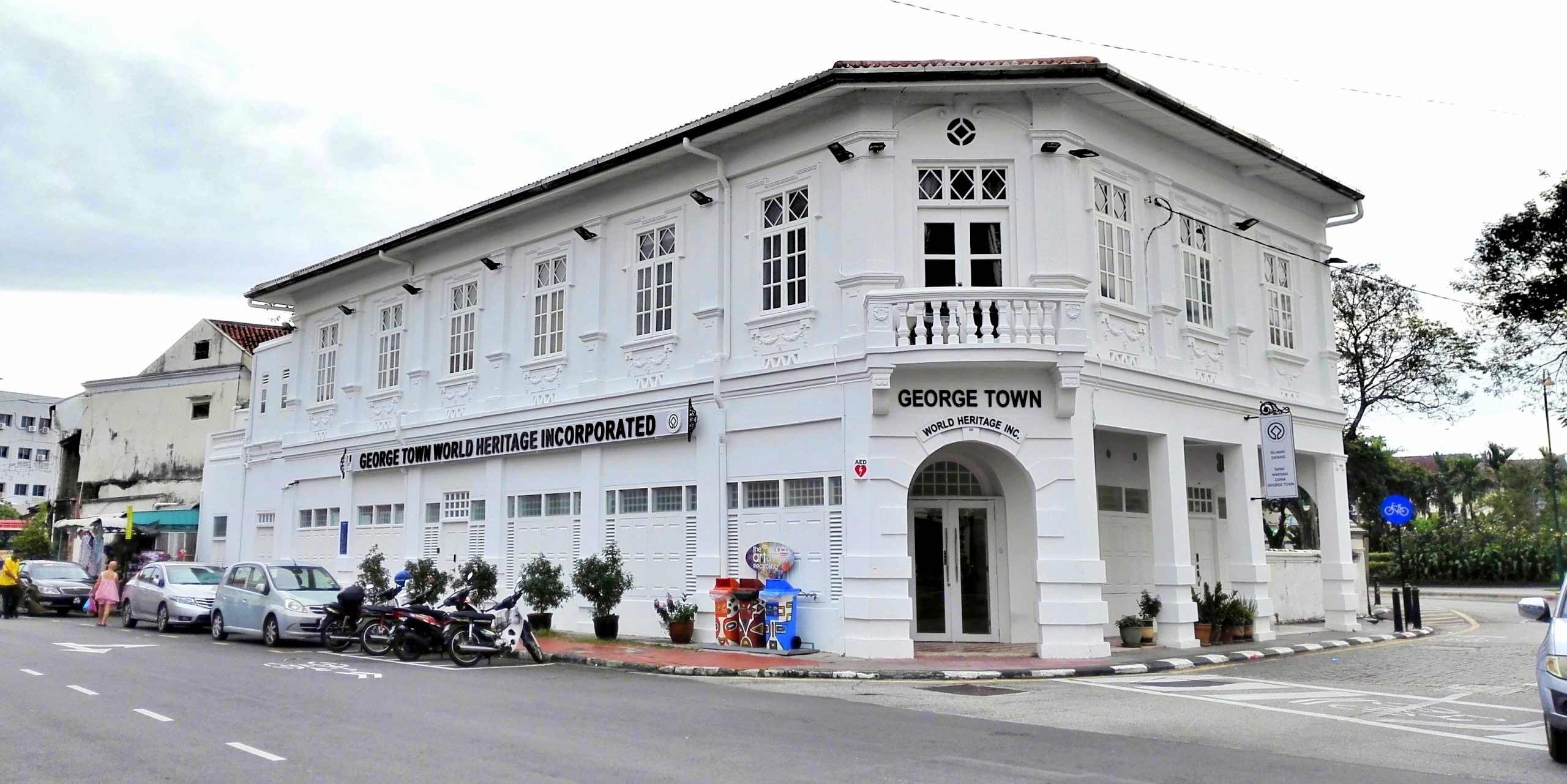
-
George Town: A UNESCO World Heritage site, George Town is the cultural and culinary heart of Penang. The city is renowned for its well-preserved colonial architecture and vibrant street art scene. Walking tours through its streets reveal hidden murals and intricately carved Chinese shop houses.
-
Street Food in Penang: Considered the food capital of Malaysia, Penang's culinary offerings are a must-try. The hawker centers and street food stalls are famous for dishes such as Char Kway Teow, Penang Laksa, and Nasi Kandar.
-
Penang Hill: Offering a respite from the heat, Penang Hill provides panoramic views of the island. You can reach the top via the Penang Hill Railway, a funicular train that scales the hill.
-
Kek Lok Si Temple: This stunning Buddhist temple, located in Air Itam, is one of the largest and most important Buddhist temples in Southeast Asia. It features a striking seven-tiered pagoda that blends Chinese, Thai, and Burmese architectural styles.
-
Penang Peranakan Mansion: Here, visitors can explore the rich history and culture of the Peranakans or Straits Chinese, a community known for their unique hybrid culture, evident in their cuisine, clothing, and language.
-
The Pinang Peranakan Mansion: A museum dedicated to Penang’s Peranakan heritage, featuring an extensive collection of furniture, jewelry, and costumes, providing a glimpse into the opulent lifestyle of a wealthy Peranakan family.
-
Beaches of Batu Ferringhi: This area is known for its beaches and is a great spot for relaxation or water sports. It also hosts a lively night market that's perfect for souvenir shopping and tasty street food.
-
Cheong Fatt Tze - The Blue Mansion: Take a guided tour of this historic building known for its indigo-blue façade and traditional Feng Shui architecture.
-
Art and Culture: Explore the vibrant art scene at Hin Bus Depot, a contemporary space for art and cultural events housed in a former bus depot.
-
Penang Botanic Gardens: Known locally as the "Waterfall Gardens," these lush gardens offer peaceful walks and occasional sightings of monkeys.
-
Little India and Chinatown: These neighborhoods offer an authentic slice of the cultures that have shaped Penang, complete with traditional eateries, shops, and vibrant decorations.
-
Butterfly Farm: Located in Teluk Bahang, it's an ecotourism gem that houses an impressive collection of butterfly and insect species.
Penang seamlessly blends historical charm with natural beauty and modernity, making it a microcosm of Malaysia’s diversity and a compelling destination for any visitor to the region. Whether you’re interested in exploring its rich history, tasting its renowned dishes, or simply enjoying some downtime by the sea, Penang promises a memorable travel experience.
Langkawi
Langkawi, an archipelago of 99 islands on Malaysia’s west coast, is best known for its stunning beaches, clear waters, and lush landscapes. Officially known as Langkawi, the Jewel of Kedah, this destination is a paradise for nature lovers and beachgoers alike. Here’s a guide to the top attractions and activities in Langkawi:
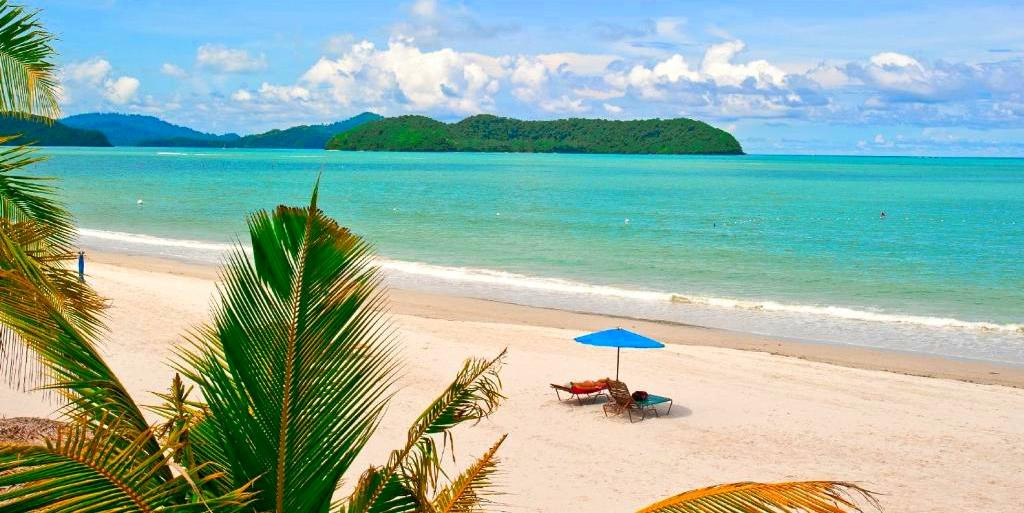
-
Langkawi Cable Car and Sky Bridge: Take the cable car up to Mount Mat Cincang and walk across the Sky Bridge to enjoy breathtaking views of the surrounding islands and the Andaman Sea. This is one of Langkawi's most famous attractions, providing panoramic vistas from one of the highest points on the island.
-
Beaches: Langkawi is home to some of the most beautiful beaches in Malaysia, including Pantai Cenang, Pantai Tengah, and Tanjung Rhu. These spots are perfect for sunbathing, swimming, and a variety of water sports.
-
Island Hopping: Explore the nearby islands with a boat tour. Popular stops include the Pregnant Maiden Lake, a freshwater lake on Dayang Bunting Island (the second largest island in the Langkawi archipelago), known for its unique silhouette and fresh water.
-
Underwater World Langkawi: Located on Pantai Cenang, this is one of the largest marine and freshwater aquaria in Southeast Asia. The aquarium features a wide range of marine life and is an educational attraction for families.
-
Kilim Karst Geoforest Park: Part of Langkawi Geopark, this area is famous for its mangrove forests, karst formations, and ancient limestone outcrops. Visitors can take guided boat tours to explore the mangroves, observe wildlife, and visit floating fish farms.
-
Diving and Snorkeling: The waters around Langkawi are rich in marine life. Pulau Payar Marine Park, a short boat ride away, is the best spot for snorkeling and scuba diving.
-
Langkawi Wildlife Park: Interact with animals and birds at this well-maintained wildlife park. It's an ideal place for families to get close to nature and learn about exotic species.
-
Eagle Square (Dataran Lang): Featuring a massive sculpture of an eagle poised to take flight, this landmark is symbolic of Langkawi and offers great photo opportunities against the backdrop of the Kuah Bay.
-
Shopping and Duty-Free: Langkawi is a duty-free island, which makes it a great place to shop for goods such as alcohol, cigarettes, perfumes, and chocolates at significantly lower prices.
-
Cultural Attractions: Visit the local craft centers and cultural villages to witness traditional batik printing and learn about Malay folklore. The Atma Alam Batik Art Village is a great place to start.
-
Nature Walks and Hiking: For the more adventurous, there are numerous trails leading through the dense rainforests of Langkawi, where you can explore the natural flora and fauna of the island.
Langkawi offers a unique blend of spectacular natural landscapes, exciting wildlife, cultural experiences, and relaxing beach activities, making it a perfect destination for both adventure and leisure. Whether you're here for the ecological wonders or simply to unwind on the sandy beaches, Langkawi promises an unforgettable escape into nature’s arms.
Cameron Highlands
The Cameron Highlands in Malaysia is a breathtaking highland area renowned for its verdant landscapes, mild climate, and colonial history, located about 200 kilometers north of Kuala Lumpur. This region is famous for its tea plantations, farms, and gardens, making it a popular retreat from the heat and hustle of the city. Here are some of the top activities and attractions in the Cameron Highlands:
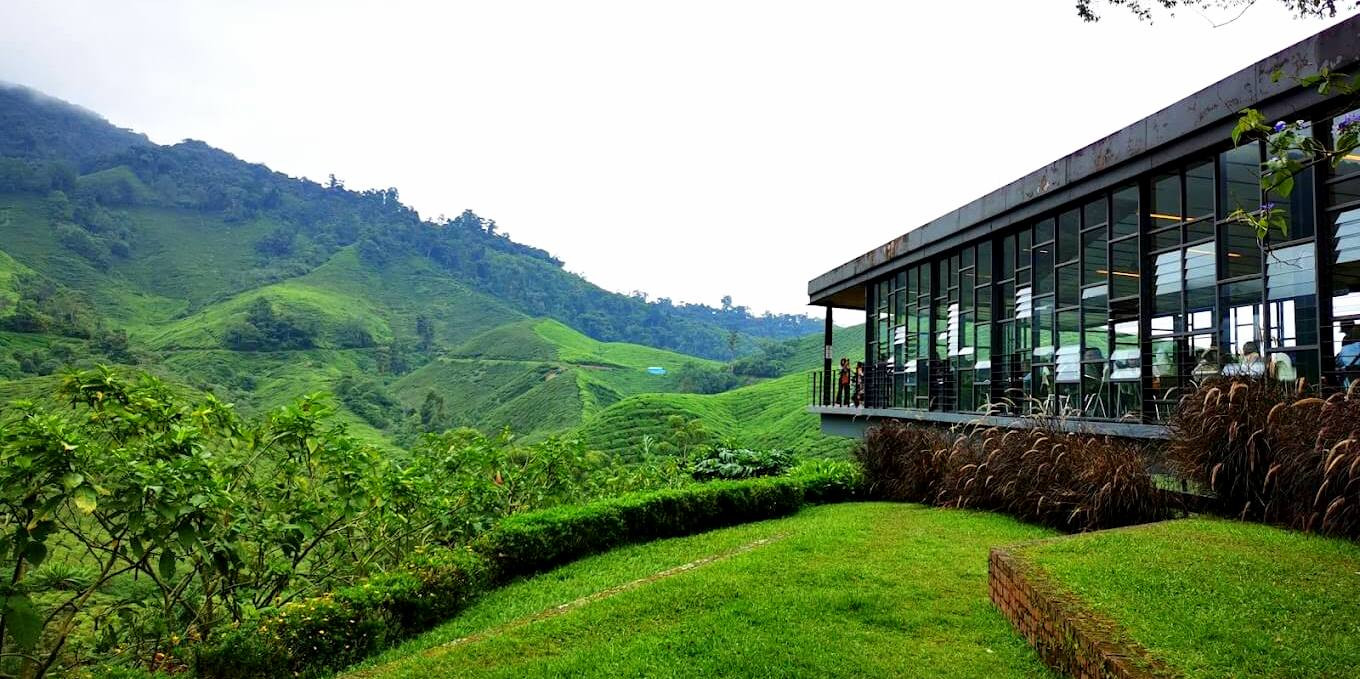
-
Tea Plantations: Visiting the vast tea estates is a must-do. The BOH Tea Plantation, which offers a factory tour and a chance to learn about the tea-making process, provides stunning views of the rolling green hills. Sipping freshly brewed tea at the plantation café while enjoying the panoramic views is a serene experience.
-
Mossy Forest: This ancient forest is often shrouded in mist, giving it a mystical appearance. Guided tours are available, where you can walk along the boardwalks and learn about the unique flora and fauna that thrive in this cool, damp environment.
-
Strawberry Farms: The Cameron Highlands is famed for its strawberry farms, where visitors can pick fresh strawberries or enjoy homemade strawberry jams and desserts. Big Red Strawberry Farm and Raju’s Hill Strawberry Farm are popular choices among tourists.
-
Butterfly Gardens, Bee Farms, and Flower Gardens: Explore the Butterfly Garden to see a variety of beautiful butterflies and other insects. Bee farms like Ee Feng Gu Honey Bee Farm offer insights into beekeeping and honey harvesting. Additionally, the Lavender Garden and Rose Centre showcase beautiful flowers and provide great photo opportunities.
-
Local Markets: The weekend market in Brinchang is a great place to experience the local culture. You can buy fresh produce, flowers, and local crafts. It's also an excellent place to sample local street food.
-
Hiking and Trekking: There are numerous trails suitable for all levels of hikers. Popular trails include the trail to Mount Brinchang, the highest point in the region, which offers spectacular views, and the Cameron Highlands Trail No. 10, leading to a beautiful waterfall.
-
Cameron Lavender Garden: This picturesque spot is home to rows of lavender, along with other attractions like a café and a gift shop selling lavender-themed souvenirs.
-
Time Tunnel Museum: This museum provides a historical perspective on the development of the Cameron Highlands with memorabilia, photographs, and exhibits that tell the story of the region's past.
-
Cameron Bharat Tea Estate: This is another beautiful tea plantation where you can take in the expansive views of terraced tea fields and enjoy a cup of tea at the café.
-
Golfing: The cool climate makes it an ideal place for golf, and the Cameron Highlands Golf Course offers a beautiful and challenging experience for golfers.
The Cameron Highlands offers a tranquil escape with its cool climate, lush landscapes, and leisurely pace of life. It's a perfect destination for nature lovers, history enthusiasts, and those looking for a serene getaway amidst natural beauty. Whether you’re interested in exploring the natural environment, enjoying the local produce, or simply relaxing in the cool highland air, the Cameron Highlands provide a refreshing break from Malaysia’s tropical heat.
Malacca
Malacca (Melaka) is a vibrant historical city on the west coast of Peninsular Malaysia. Known as "The Historic State," Malacca is rich in heritage buildings, ancient landmarks, colonial structures, and a unique legacy from the Portuguese, Dutch, and British eras. This UNESCO World Heritage Site is an ideal destination for history buffs and culture enthusiasts. Here are some of the highlights and must-do activities when visiting Malacca:
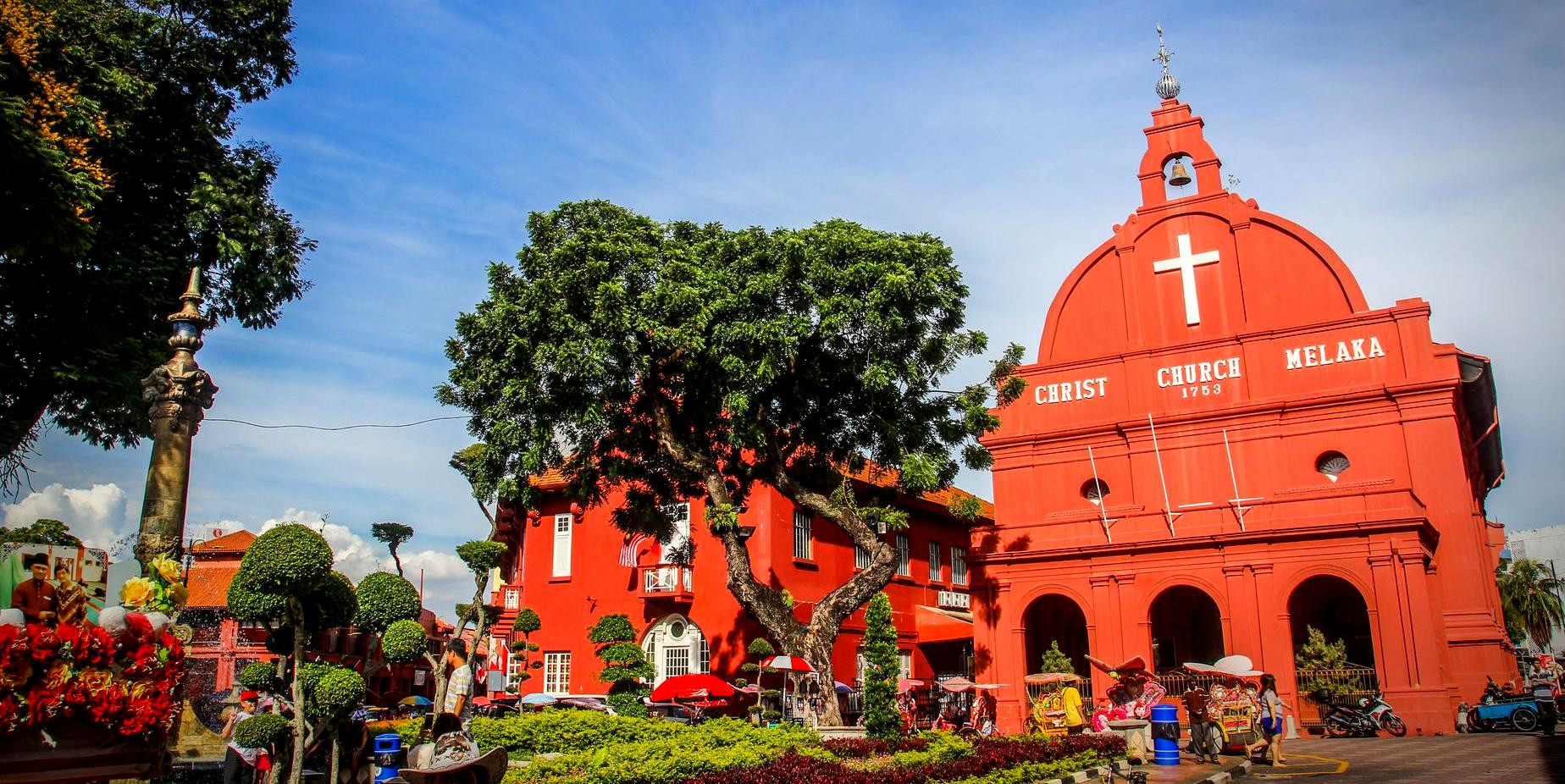
-
A Famosa Fort: Explore the remains of one of the oldest surviving European architectural remains in Southeast Asia. Originally built by the Portuguese in the 16th century, only a small gatehouse (Porta de Santiago) survives today, but it remains a popular photographic spot for visitors.
-
Jonker Street (Jonker Walk): Heart of Malacca's Chinatown, Jonker Street is famous for its antique shops, but it comes alive during the weekend night markets where you can find everything from vintage items to local delicacies.
-
Christ Church & Stadthuys: Visit these iconic red structures that stand out in Malacca's city square. Christ Church is an 18th-century Anglican church, while the Stadthuys displays typical Dutch colonial architecture, housing a museum of history and ethnography.
-
Melaka River Cruise: Take a scenic river cruise along the Melaka River, which is especially beautiful in the evening when the riverbanks are lit up. The cruise offers a relaxing way to see the city from a different perspective.
-
Baba & Nyonya Heritage Museum: Discover the unique Peranakan culture of Malacca in this museum set in a traditional Peranakan townhouse. The museum showcases the history, customs, and traditions of the Baba-Nyonya community.
-
Maritime Museum & Naval Museum: Housed in a replica of the Flor de la Mar, a Portuguese ship that sank off the Malacca coast, these museums offer insights into Malacca's importance as a historical trading port.
-
Trishaw Ride: Experience Malacca in a colorful and decorated trishaw. These rides, often accompanied by blaring pop music, provide a fun and kitschy way to navigate the historic core.
-
Kampung Kling Mosque: This mosque is unique for its blend of Sumatran, Chinese, Hindu, and Malay architectural elements, reflecting the multicultural heritage of Malacca.
-
Cheng Hoon Teng Temple: Visit Malaysia’s oldest traditional Chinese temple, dating back to the 17th century. It plays a critical role in the practice of traditional Chinese beliefs in the region.
-
Melaka Menara Taming Sari: Offering panoramic 360-degree views of the city, this revolving tower is a must-visit for first-time visitors looking to get a lay of the land.
-
Food and Cuisine: Malacca is famous for its culinary scene. Be sure to try local specialties like chicken rice balls, satay celup, Nyonya laksa, and cendol during your visit.
Malacca is a fascinating blend of cultures, history, and architecture, making it a captivating place to visit. Each corner of the city offers a glimpse into its rich historical tapestry, with well-preserved buildings and ancient relics telling the stories of its former colonial days. Whether you're strolling through the bustling Jonker Street, exploring age-old temples, or cruising down the serene Melaka River, Malacca promises a memorable journey back in time.
Borneo's Natural Wonders
Borneo, the third-largest island in the world, is shared by Malaysia, Indonesia, and Brunei. It is renowned for its incredible biodiversity, featuring some of the most unique ecosystems on the planet. The Malaysian portion of Borneo is divided into two states, Sabah and Sarawak, both of which offer a plethora of natural wonders that attract nature lovers, adventure seekers, and ecotourists. Here’s a guide to exploring the natural wonders of Borneo:
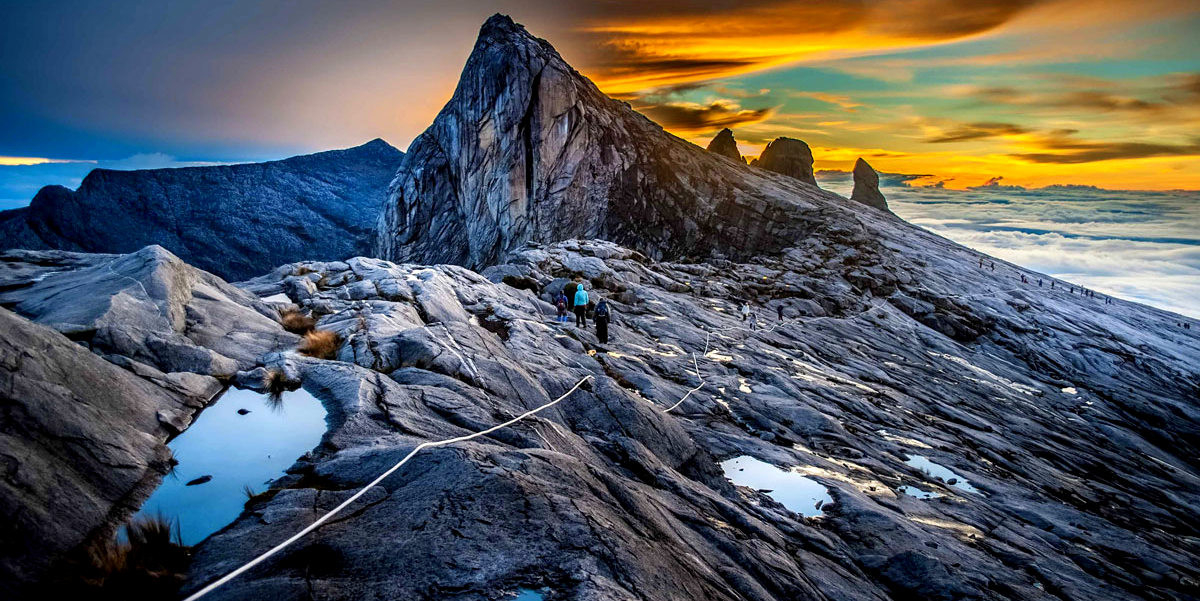
-
Mount Kinabalu: Sabah's Mount Kinabalu is one of the highest peaks in Southeast Asia and a UNESCO World Heritage Site. Climbing this majestic mountain offers a challenging trek with rewarding panoramic views from the summit. The diverse ecosystems along the ascent include lowland dipterocarp forests, montane forests, and alpine meadows, each with unique flora and fauna.
-
Kinabatangan River: The Kinabatangan River is the second-longest river in Malaysia and provides a vital habitat for wildlife. It’s known for its remarkable wildlife-watching opportunities. Cruises along the river offer sightings of Bornean orangutans, proboscis monkeys, crocodiles, elephants, and a variety of bird species.
-
Danum Valley: Danum Valley Conservation Area is a pristine rainforest and one of the best places on the island for wildlife encounters in their natural habitat. Guided jungle treks, night safaris, and canopy walks offer opportunities to observe diverse species like the clouded leopard, Borneo pygmy elephants, and countless bird species.
-
Mulu Caves: Gunung Mulu National Park in Sarawak is famous for its limestone karst formations, caves, and diverse ecosystems. It is home to some of the largest and most spectacular caves in the world, including Deer Cave, which hosts millions of bats, and Clearwater Cave, the largest cave system in the world by volume.
-
Sepilok Orangutan Rehabilitation Centre: Located near Sandakan in Sabah, this renowned center rehabilitates orphaned orangutans rescued from logging sites, plantations, and illegal hunting. Visitors can witness the incredible work being done to reintroduce these magnificent creatures back into the wild.
-
Turtle Islands Park: This conservation area consists of three islands where visitors can observe green and hawksbill turtles come ashore to lay their eggs. The park's conservation efforts allow visitors to watch turtle hatchlings being released into the sea.
-
Bako National Park: Sarawak’s oldest national park offers a compact but fascinating range of Bornean wildlife, including proboscis monkeys, flying lemurs, and wild boar, all within sight of its beautiful coastline and network of jungle trails.
-
Sipadan Island: Considered one of the world’s top diving destinations, Sipadan is located in the Celebes Sea off the east coast of Sabah. The coral reef biodiversity here includes over 3,000 species of fish and hundreds of coral species, making it a diver’s paradise.
-
Rainforest Discovery Centre: Situated in Sandakan, this educational center provides extensive information about the ecology of rainforests through its exhibition halls, canopy walkway, and plant discovery gardens. It’s an excellent place for bird-watching and learning about the rainforest's ecological importance.
-
Tawau Hills Park: Offering a cooler climate and protection to a variety of wildlife and plant species, Tawau Hills Park is known for its waterfalls, hot springs, and a chance to see the world’s tallest tropical tree.
Exploring Borneo's natural wonders offers an immersive experience into some of the most intact and diverse ecosystems on earth. Whether you're scaling the heights of Mount Kinabalu or diving the depths of Sipadan, Borneo's incredible landscapes and wildlife provide a profound reminder of the natural world's beauty and complexity.
Taman Negara
Taman Negara, which translates to "national park" in Malay, is one of the world's oldest rainforests, estimated to be over 130 million years old. This vast national park, sprawling across 4,343 square kilometers across three Malaysian states (Pahang, Kelantan, and Terengganu), is a must-visit for eco-tourists, nature enthusiasts, and adventure seekers. Here’s a detailed guide to exploring Taman Negara:

-
Jungle Trekking: Taman Negara offers a plethora of trails that range in difficulty and length, providing visitors the opportunity to explore the dense rainforest and its complex ecosystem. The most popular trek is to Bukit Teresek, which offers a fantastic view of Mount Tahan, the highest peak in Peninsular Malaysia.
-
Canopy Walkway: One of the park's highlights is the Canopy Walk, suspended 40 meters above ground and stretching over 500 meters long. It's one of the longest suspension bridges in the world and offers a unique perspective of the rainforest canopy, allowing for up-close observation of flora and fauna not easily visible from the ground.
-
River Cruises and Rapids Shooting: Exploring the park by river is a must. Visitors can enjoy a leisurely cruise along the Tahan River or opt for the more exhilarating rapid shooting — navigating the river's rapids in a small boat. These activities provide excellent opportunities to observe the lush riverine vegetation and wildlife.
-
Visit Orang Asli Villages: Taman Negara is home to the Orang Asli, the indigenous people of Peninsular Malaysia. Visiting an Orang Asli village offers insight into their traditional way of life, including their hunting techniques, like blowpipe hunting, and their daily routines in the rainforest.
-
Night Jungle Walks and Safari: Nighttime in Taman Negara unveils a different aspect of the jungle, with a night walk or a safari. These guided tours allow visitors to spot nocturnal animals such as owls, nightjars, and perhaps even the elusive Malaysian tiger or leopard.
-
Fishing: The park is a popular spot for fishing enthusiasts, with the Tahan River offering the chance to catch the prized ikan kelah (Malaysian mahseer) among other species. Fishing permits are required and can be obtained at the park headquarters.
-
Cave Exploration: Taman Negara also features several caves such as Gua Telinga (Ear Cave), which offer adventurous caving opportunities. These caves are home to various species of bats and insects, and the cave walls are often adorned with fascinating rock formations.
-
Bird Watching: With over 350 species of birds residing in the park, Taman Negara is a bird watcher's paradise. Early mornings are the best time for bird watching, when many tropical birds are most active.
-
Mount Tahan Trekking: For the ultimate challenge, adventurers can embark on a trek to the summit of Mount Tahan, which is the highest point in Peninsular Malaysia. This challenging trek takes several days and traverses some of the most rugged and remote areas of the park.
-
Photography and Relaxation: With its stunning natural beauty and tranquil setting, Taman Negara is also a perfect place for photography enthusiasts and those looking to simply relax amidst nature. The diversity of landscapes—from dense jungles to vast rivers—provides countless opportunities for capturing breathtaking photos or enjoying peaceful moments in nature.
Taman Negara’s ancient ecosystem offers an unparalleled opportunity to experience one of the most diverse and thriving rainforests on earth. Whether you’re hiking through the dense jungle, cruising down the river, or simply soaking in the sights and sounds of the forest, a visit to Taman Negara is a profound journey back into nature’s embrace.
Ipoh
Ipoh, the capital city of Perak in Malaysia, is steeped in history and known for its colonial architecture, stunning limestone caves, and culinary delights. This charming city has grown in popularity as a tourist destination, offering a blend of old-world charm and modern attractions. Here’s a guide to exploring Ipoh:
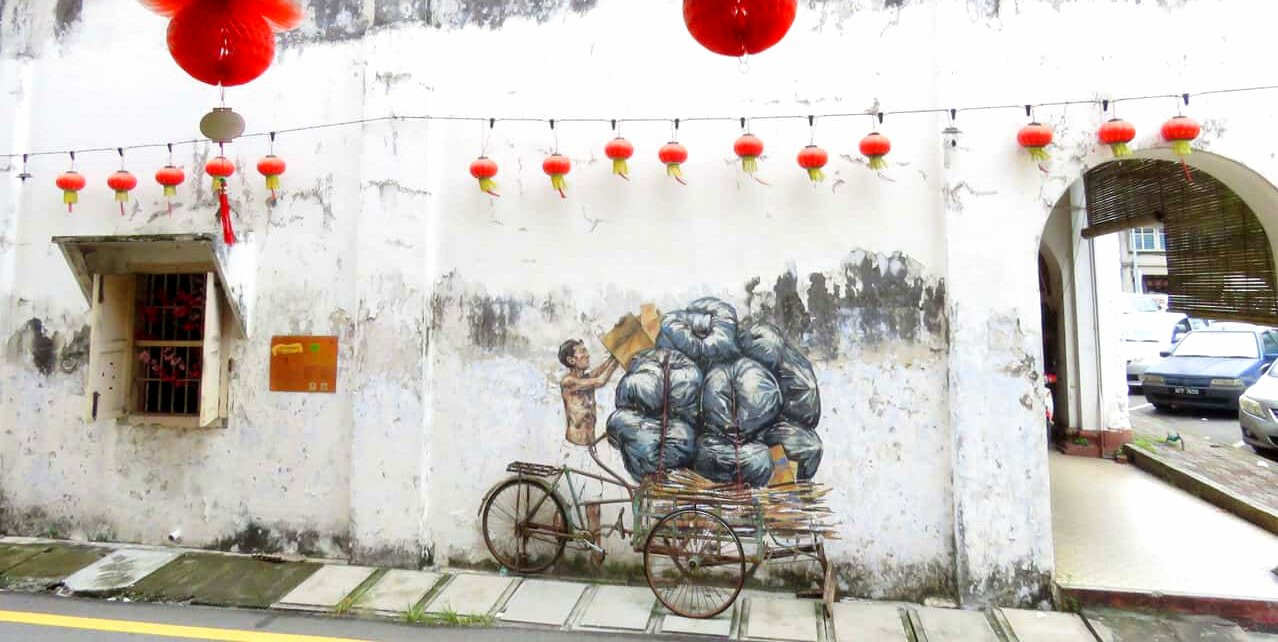
-
Ipoh Old Town: Start your exploration in Ipoh Old Town. This area is famous for its British colonial-era architecture. Stroll through the streets to see historic buildings like the Ipoh Railway Station, which is often referred to as the Taj Mahal of Ipoh due to its Moorish architecture, and the Town Hall across the road. The Concubine Lane, which has stories of its past as a red-light district, is now a lively alley filled with quaint shops and eateries.
-
Ipoh Heritage Trail: For a more structured exploration, follow the Ipoh Heritage Trail. It takes visitors past some of the city's most iconic landmarks, including the Birch Memorial Clock Tower and various colonial buildings, providing a glimpse into the city's rich history.
-
Limestone Caves: Ipoh is surrounded by limestone hills that are over 400 million years old, and many of these hills have beautiful caves filled with stalactites and stalagmites. The Kek Lok Tong Cave Temple and Zen Gardens are set within a vast cave in the limestone outcrops and are known for their beautiful Buddhist and Chinese shrines amidst natural rock formations. Sam Poh Tong Temple, located in another impressive cave, features a pond and a large number of Buddha statues.
-
Ipoh White Coffee: No visit to Ipoh would be complete without trying the famous Ipoh white coffee. The old town is dotted with traditional coffee shops (kopitiam) where you can savor this uniquely Malaysian drink, which is made from coffee beans roasted with palm oil margarine and served with condensed milk.
-
Street Art: Inspired by the success of street art in George Town, Penang, Ipoh has developed its collection of murals. These artworks, painted by local and international artists, can be found around the old town and add a modern twist to the historical backdrop.
-
Local Cuisine: Ipoh is also known for its fantastic local cuisine. Don't miss trying dishes such as bean sprout chicken (tauge ayam), Ipoh Sar Hor Fun (a type of flat noodle soup), and various kuih (local desserts).
-
Temples and Mosques: Visit some of the beautiful temples and mosques in the area, such as the Perak Tong Temple, which features a huge Buddha statue and wall paintings depicting Buddhist lore. The Masjid Sultan Idris Shah II is an architecturally stunning mosque that reflects modern Islamic designs.
-
Night Markets: Explore the night markets, such as Pasar Malam Ipoh Jaya, where you can indulge in street food and shop for local products.
-
Ipoh Parade: For those looking for modern shopping experiences, Ipoh Parade is one of the largest shopping malls in Ipoh, offering a variety of international and local brands.
-
Recreational Parks: Lastly, for a touch of nature, visit recreational parks such as Gunung Lang Recreational Park, which features a lake, a man-made waterfall, and a mini zoo, or DR Seenivasagam Park, known for its beautifully landscaped gardens and recreational facilities.
Ipoh's blend of history, culture, and natural beauty makes it a fascinating destination for all types of travelers, promising an array of experiences that captivate both the history buff and the casual tourist alike. Whether you’re exploring its historical sites, dining on its famous cuisine, or simply enjoying the scenic views, Ipoh offers a rewarding travel experience.
Cultural Festivals
Malaysia, with its rich cultural tapestry, is a vibrant hub of festivities and celebrations that reflect its multicultural heritage. Throughout the year, the country hosts numerous cultural festivals that bring together the many ethnicities, including Malay, Chinese, Indian, and indigenous groups, each celebrating their traditions and customs. Here are some of the major cultural festivals in Malaysia that offer visitors a glimpse into the nation's diverse cultures:
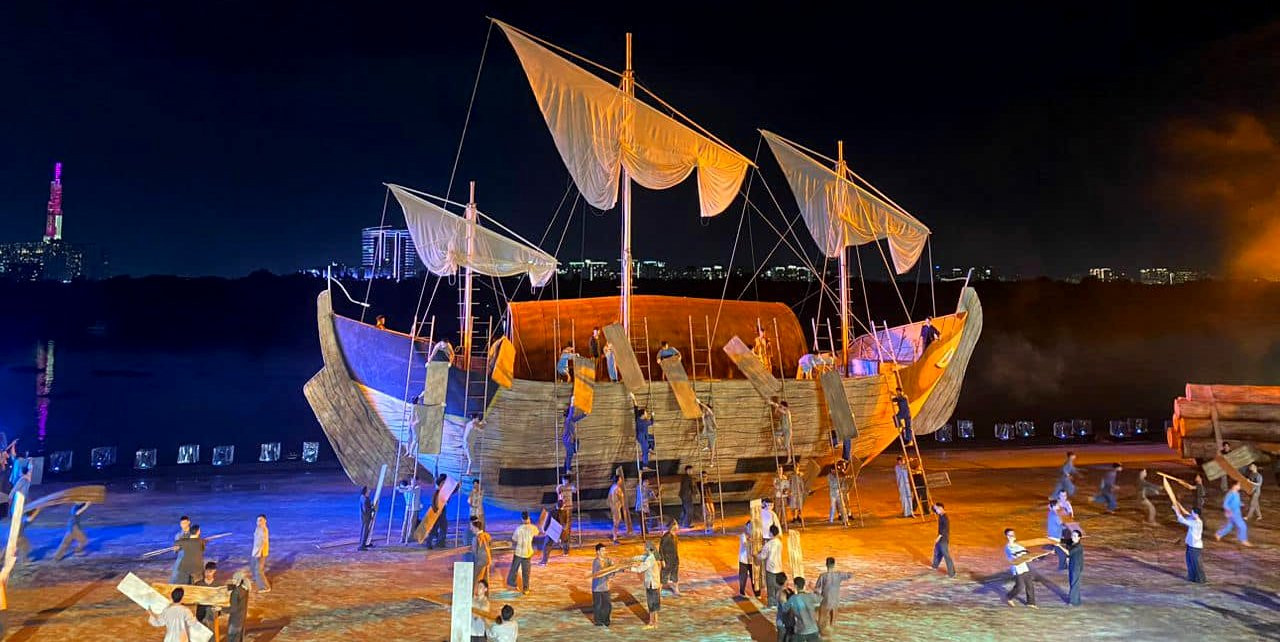
-
Chinese New Year: Celebrated nationwide by the Chinese community, Chinese New Year is one of the most significant and colorful cultural festivals in Malaysia. The festival marks the beginning of the Chinese lunar year and is celebrated with lion dances, dragon dances, fireworks, family reunions, and lots of traditional foods. The streets and homes are decorated with red lanterns and banners to bring good luck and fortune.
-
Hari Raya Aidilfitri: Known internationally as Eid al-Fitr, Hari Raya Aidilfitri is celebrated by Muslims at the end of the Ramadan month of fasting. It is one of the most important Muslim festivals and is celebrated with prayers, feasts, and family gatherings. Traditional attire like baju kurung and baju Melayu is worn, and homes are opened to family and friends who come to visit and feast on special dishes like rendang and ketupat.
-
Deepavali: Also known as Diwali, Deepavali is the Hindu festival of lights celebrated by Malaysia’s Indian community. It signifies the victory of light over darkness and good over evil. Homes are decorated with oil lamps, and the air is filled with the scent of incense and the sounds of fireworks. Special prayers are offered, and open houses are held where people share festive meals.
-
Thaipusam: Thaipusam is a dramatic Hindu festival that is particularly grand in Malaysia. It is celebrated in honor of Lord Murugan, the Hindu god of war, and is known for the astonishing sight of devotees carrying kavadis – elaborate frameworks decorated with peacock feathers and attached to the body through hooks and skewers as acts of devotion. The Batu Caves near Kuala Lumpur and Penang are key centers for this festival, attracting thousands of devotees and spectators.
-
Gawai Dayak: The Gawai Dayak is a harvest festival celebrated by the indigenous people of Sarawak and West Kalimantan on Borneo. Marking the end of the rice harvesting season, it involves traditional dances, music, and lots of local rice wine (tuak). It’s a time for people to give thanks for a good harvest and to enjoy the fruits of their labor.
-
Kaamatan: Kaamatan is a harvest festival celebrated by the Kadazan-Dusun and Murut communities in Sabah. This festival is similar to Gawai in Sarawak but has its own unique rituals and practices, including the Unduk Ngadau beauty pageant and the Magavau ritual, which involves ancient rites performed by bobohizans (high priestesses).
-
Malaysia Water Festival: A celebration of Malaysia’s rivers and coasts, the Malaysia Water Festival is held in various parts of the country and features water-based sports and activities, such as boat races, fishing competitions, and water-skiing exhibitions.
-
Mid-Autumn Festival: Celebrated by the Chinese community, the Mid-Autumn Festival is famous for its lantern parades and mooncakes. Families gather to celebrate the full moon, symbolizing harmony and unity.
These festivals not only highlight the country's rich cultural mosaic but also promote a spirit of unity and understanding among its diverse communities. For travelers, these festivals offer a spectacular insight into the traditions and lifestyles that make Malaysia truly Asia.
Adventure Activities
Malaysia is an adventure enthusiast's paradise, offering a broad spectrum of activities that cater to thrill-seekers and nature lovers alike. From dense rainforests and majestic mountains to rivers and underwater marvels, Malaysia's diverse landscapes provide the perfect backdrop for a host of exhilarating outdoor adventures. Here’s a roundup of some must-try adventure activities in Malaysia:
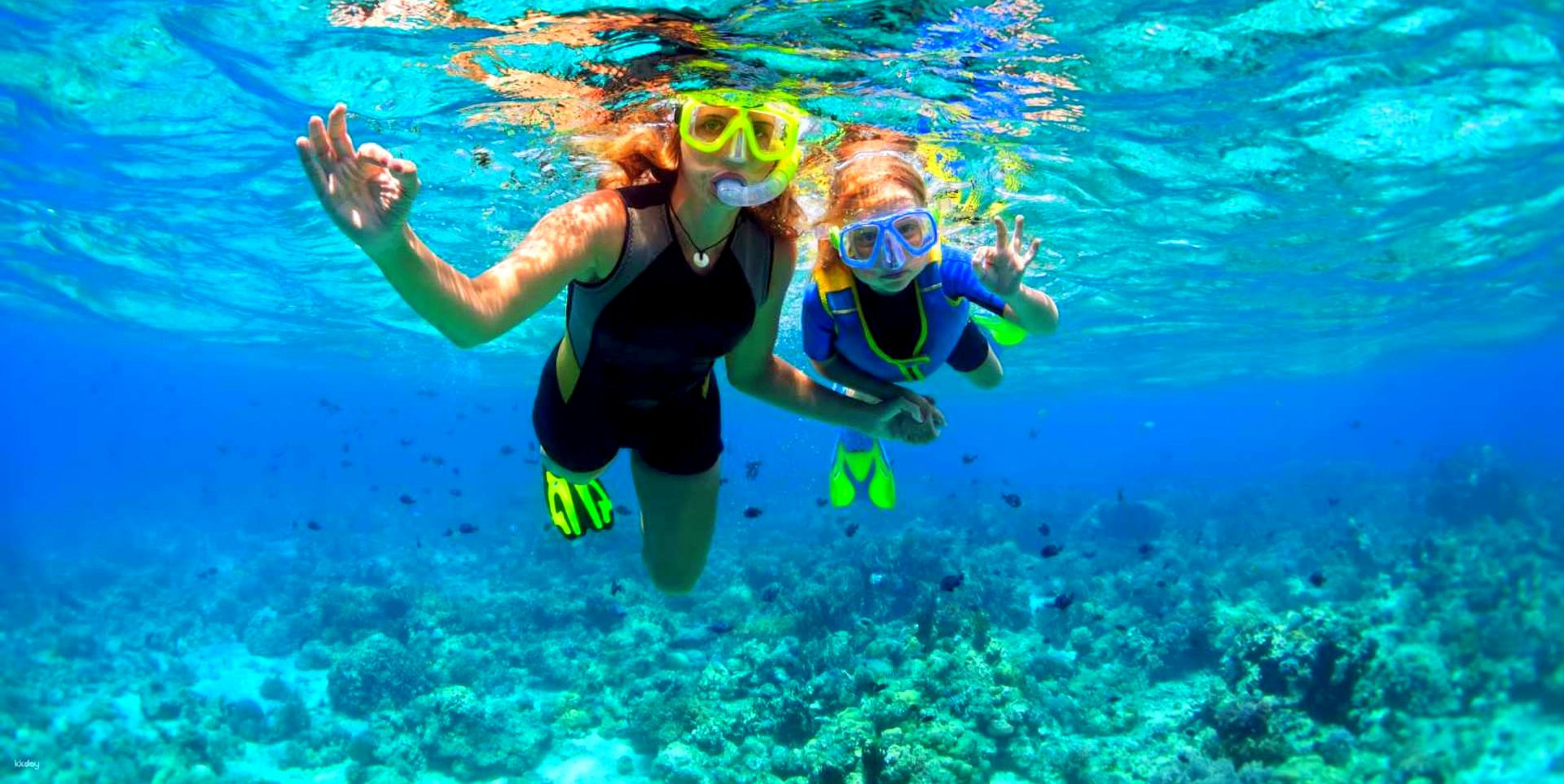
-
Jungle Trekking: Explore the ancient rainforests of Malaysia, such as those in Taman Negara, which is considered one of the oldest rainforests in the world, or the biodiversity-rich jungles of Borneo. These treks offer a chance to encounter exotic wildlife and experience the untouched beauty of nature.
-
Mountaineering and Rock Climbing: Mount Kinabalu in Sabah, Borneo, is a popular destination for climbing enthusiasts. As the highest peak in Southeast Asia, it challenges trekkers with its steep ascent, rewarding them with stunning views at the summit. For rock climbers, the limestone cliffs in the Batu Caves near Kuala Lumpur provide excellent climbing routes.
-
Diving and Snorkeling: Malaysia boasts some of the world’s best diving spots, including Sipadan Island in Sabah, which is renowned for its rich marine biodiversity. Other notable diving locations include Layang-Layang Island and the Perhentian Islands, where the clear waters reveal a mesmerizing world of coral reefs and aquatic wildlife.
-
Paragliding: Experience the thrill of paragliding amidst the stunning scenery of the Malaysian highlands. Locations like Bukit Jugra and Bukit Bubus offer paragliding experiences that allow you to soar over breathtaking landscapes.
-
Caving: Explore the vast caves of Gunung Mulu National Park in Sarawak, which include the world's largest cave chamber (Sarawak Chamber) and one of the world’s longest networks of caves. Adventure caving here can involve swimming through underground rivers and scaling rock walls.
-
White Water Rafting: The rivers in Malaysia provide exhilarating opportunities for white water rafting. The Padas River in Sabah and the Selangor River near Kuala Lumpur are popular among rafting enthusiasts looking for challenging rapids in an incredible natural setting.
-
Zip-lining: For a rush of adrenaline, try zip-lining over the lush rainforests or between islands. The Langkawi SkyCab and SkyBridge offer an opportunity to zip-line between the main island and smaller islets, providing spectacular aerial views of the sea and forest below.
-
Kite Surfing and Wind Surfing: The beaches of Malaysia, particularly those in Sabah and Johor, are ideal for kite surfing and wind surfing due to their strong winds and large waves.
-
Wakeboarding: With its many lakes and coastal areas, Malaysia is becoming a popular destination for wakeboarding. Places like Putrajaya and the man-made Tasik Kenyir lake offer facilities for both beginners and experienced boarders.
-
Hot Air Ballooning: Enjoy a tranquil hot air balloon ride over Putrajaya, where you can drift serenely above the city's impressive architecture and beautiful landscapes at sunrise.
These adventure activities not only pump up your adrenaline but also offer a unique way to explore Malaysia’s stunning natural and man-made landscapes. Whether it’s above the water, below the ground, or high up in the air, Malaysia provides countless ways to satisfy your thirst for adventure.
A lively place, Malaysia has a great range of activities perfect for every kind of traveler. From vibrant cities and historic sites to gorgeous beaches and pristine forests, Malaysia mixes cultural diversity with spectacular natural beauty. Malaysia offers a remarkable trip with its combination of Malay, Chinese, Indian, and native influences whether you are savoring the many culinary delights, visiting lively festivals, or simply admiring the natural beauty. Malaysia is more than a location—a fascinating world with welcoming people, reasonable travel, and many activities to enjoy, guaranteeing every trip is as enriching as it is pleasant.
FAQs for Things to do in Malaysia
Q: What are the top tourist attractions in Malaysia?
A: Malaysia's top attractions include the Petronas Twin Towers in Kuala Lumpur, UNESCO World Heritage sites like George Town in Penang and the historic city of Malacca, the beautiful islands of Langkawi and Sipadan, and the ancient rainforests of Borneo.
Q: What are the best activities for adventure seekers in Malaysia?
A: Adventure enthusiasts can enjoy activities such as diving in Sipadan, trekking and climbing Mount Kinabalu in Sabah, exploring the extensive cave systems in Gunung Mulu National Park, and white-water rafting on the Padas River.
Q: Where can I experience traditional Malaysian culture?
A: Traditional Malaysian culture can be experienced at cultural festivals like Hari Raya Aidilfitri, Chinese New Year, and Deepavali. Visiting indigenous villages in East Malaysia or exploring the cultural streets of George Town and Malacca also provides deep cultural insights.
Q: What are some family-friendly activities in Malaysia?
A: Families can visit theme parks like Legoland and Sunway Lagoon, explore interactive museums in Kuala Lumpur, enjoy the beaches and nature activities in Langkawi, or discover marine life at the Aquaria KLCC.
Q: What are the best places for food lovers in Malaysia?
A: Penang is renowned as the food capital of Malaysia, famous for its street food like Char Koay Teow and Penang Laksa. Kuala Lumpur and Ipoh are also must-visit cities for food enthusiasts, offering a mix of traditional Malay, Chinese, and Indian dishes.
Q: Are there good opportunities for wildlife observation in Malaysia?
A: Yes, Borneo's Sabah and Sarawak states are ideal for wildlife observation, where you can see orangutans, proboscis monkeys, and pygmy elephants. The Kuala Gandah Elephant Sanctuary and Sepilok Orangutan Rehabilitation Centre are also popular spots.
Q: What are some unique shopping experiences in Malaysia?
A: Shopping in Malaysia ranges from upscale malls like Suria KLCC to unique local markets such as the Central Market in Kuala Lumpur and the night markets in Jonker Street, Malacca. Each offers a variety of traditional crafts, luxury goods, and local delicacies.
Q: What are the best places for scuba diving in Malaysia?
A: Malaysia is home to some of the world's best dive sites, including Sipadan Island, known for its rich marine biodiversity, and the coral reefs around the islands off the coast of Sabah and the Perhentian Islands.
Q: How can I explore Malaysia's natural landscapes?
A: Malaysia's natural landscapes can be explored by visiting the Cameron Highlands for its tea plantations and cool climate, trekking through Taman Negara—one of the world’s oldest rainforests, or enjoying the pristine beaches and jungles of Langkawi.
Q: What is the best time of year to visit Malaysia?
A: The best time to visit Malaysia generally depends on the region due to its equatorial climate. For Peninsular Malaysia, the months between December and February are ideal, while for East Malaysia, June to August offers the best weather conditions.
For the Nepal tour, please click here.
If you are looking for different kinds of Nepal Tours or Trekking Packages, feel free to contact us.












